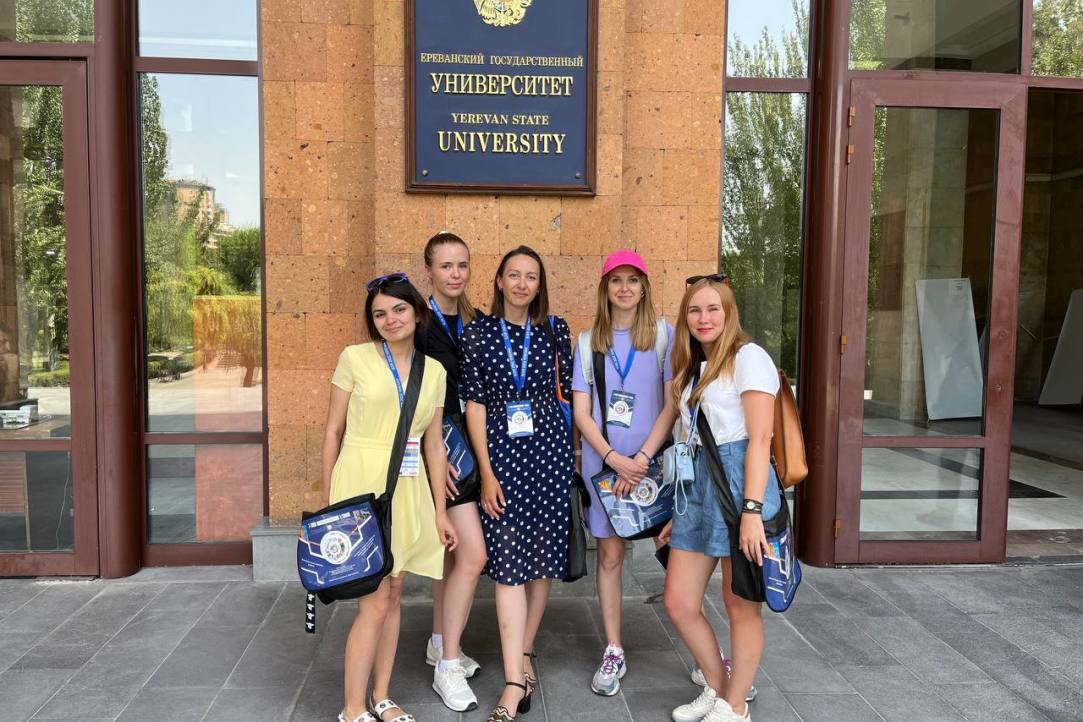EVALUATE
the effectiveness of educational innovations and practices
RESEARCH
student and teacher engagement with educational technologies
STUDY
patterns of EdTech usage through digital traces
ENGAGE
international think tanks and scholars in the evaluation of educational innovations
Topic Map of Our Studies
-
Collaborative learning
How to organize and support joint learning in online environments?
-
Using digital traces for instructional design
Who uses educational technologies in the educational process and how are they used?
-
Engagement tools for online learning
How to improve the educational experience by using automatically collected data on online platforms?
Areas of Expertise
-
WE CONSULT
business companies, schools, and organizations on issues
-
WE EVALUATE
the effectiveness of educational interventions on the learning experience of students on online platforms
-
WE CONDUCT
full-cycle research: goal setting, design, measurement instrument development, data collection and processing
Research Projects
Implementation, Usage and Perception of Digital Technologies in Schools
We analysed the dynamics of digital inequality in Russia during educational reforms aimed to improve the quality and equity of education system, as well as during the COVID-19 pandemic-related transition to distance learning. We studied teacher practices related to the use of digital technologies, and looked into the relationships between these practices and the characteristics of teachers and schools. Finally, we made an assessment of teacher burnout and teachers’ technology-related stress during and after the COVID-19 pandemic.
The Case of New Moscow: A Natural Experiment
We assessed the effect of the ‘Stolichnoye obrazovanie’ (‘Education in the capital) programme on ‘New Moscow’ students’ academic achievement and their access to educational resources. We also performed an analysis of the collateral factors affecting academic achievement and the scope of resources (inputs and infrastructure) available to schools. As a result, we proposed recommendations aimed at reducing educational inequality in Russia.
Factors and Barriers of Digital Technology Use in Schools
In this project, we studied the factors that determine how primary school teachers react to the implementation of digital technologies in schools and how they actually use them. We investigated the relationships between teachers’ behaviours towards the use of digital technologies and their characteristics, and complemented this analysis with a study of the effects of school environments on teachers’ use of such technologies. We also identified the mechanisms and factors behind the teachers’ behaviours.
Commercial Projects
Measuring Student Engagement on Digital Educational Platforms
Together with the educational platform Uchi.ru, we conducted a comprehensive study of approaches to the assessment and measurement of student engagement with digital educational platforms for children. We developed an experimental design (RCT) which can be used to assess the effectiveness of various mechanics for student engagement.
Involvement in Educational Programmes
In this programme, students learn how to develop informed solutions related to educational policy, business, and science based on data and the latest theories. Students gain an understanding of the economics of educational products and management principles.
2 years, Full-time programme (in Russian)
In this course, students are introduced to the practical aspects of EdTech research and the foundations of online educational experiences.
Elective course for HSE students
This programme is aimed at developing assessment instruments that take into account individual personality features.
2 years, Full-time programme
We conduct practical and fundamental research into education based on an interdisciplinary approach.
Our Team
Laboratory Head
Cognitive processes in digital learning environments, methodology for analysing and using digital traces
Research Staff
AI in education, online learning support for (under)graduate students

Instructional design in online environments, collaborative learning
Using AI and ML-based tools in education research, learning patterns in online environments
Instructional design, cognitive load, problem-oriented learning, learning control
Computer-supported collaborative learning, providing feedback in online learning
Engagement, learning analytics, instructional design in online learning
Instructional design, concept structure, problem-oriented learning, concept maps, psychology of learning
AI in education, collaborative learning, online learning, academic writing

Self-regulated learning, methodology for analysing and using digital traces
Lab Manager
News

-

-

-

Call for Collaboration!
February 01, 2021
-

Studying in spite of Closed Borders
January 21, 2021
Publications
-
Book
Open praxis "The Manifesto for Teaching and Learning in a Time of Generative AI: A Critical Collective Stance to Better Navigate the Future"
This manifesto critically examines the unfolding integration of Generative AI (GenAI), chatbots, and algorithms into higher education, using a collective and thoughtful approach to navigate the future of teaching and learning. GenAI, while celebrated for its potential to personalize learning, enhance efficiency, and expand educational accessibility, is far from a neutral tool. Algorithms now shape human interaction, communication, and content creation, raising profound questions about human agency and biases and values embedded in their designs. As GenAI continues to evolve, we face critical challenges in maintaining human oversight, safeguarding equity, and facilitating meaningful, authentic learning experiences. This manifesto emphasizes that GenAI is not ideologically and culturally neutral. Instead, it reflects worldviews that can reinforce existing biases and marginalize diverse voices. Furthermore, as the use of GenAI reshapes education, it risks eroding essential human elements—creativity, critical thinking, and empathy—and could displace meaningful human interactions with algorithmic solutions. This manifesto calls for robust, evidence-based research and conscious decision-making to ensure that GenAI enhances, rather than diminishes, human agency and ethical responsibility in education.
Vol. 16. Iss. 4. International Council for Open and Distance Education, 2024.
-
Article
Internal quality assurance of graduate engineering programmes in Russia—perspectives of programme directors
This study investigates how internal quality and quality assurance are perceived and operated by Russian graduate engineering programmes directors. Based on semi-structured interviews (n = 15) and thematic analysis, four themes are revealed: the managerial role, with varying levels of directors’ proactivity; students’ intake quality, ranging from passive to proactive approaches; the managerial insight, represented by a combination of internal perceptions and different metrics and quality assurance practices, including student feedback, personal interactions and handling complaints. It was identified that quality, when matched to Harvey and Green’s (1993) conceptualisation, is viewed by directors as ‘exceptional’ across all the approaches, whereas quality as ‘fit for purpose’ is highlighted less frequently. This study contributes to discussions on quality culture and quality conceptualisations in contexts where engineering education is prioritised and heavily regulated. The findings may inform policymakers in similar contexts and guide university managers in fostering a quality culture within their institutions.
Quality in Higher Education. 2025. P. 1-22.
-
Book chapter
The quality of admissions to Russian doctoral programmes during the COVID-19 pandemic
Previous studies have shown that the COVID-19 pandemic had a negative impact on higher education systems and student learning globally. However, despite this, many countries experienced an increase in doctoral enrolment in 2020, which has raised concerns about the quality of admission and the motivation of doctoral candidates during the pandemic. This article aims to explore this context by delving into statistics about Russian doctoral programmes, which saw a decline in enrolment from 2010 to 2019. We use data from a web survey of 1,895 students enrolled in doctoral programmes at Russian universities in 2020. The results suggest that the increase in enrolment came in tandem with a decrease in the quality of doctoral admission. More students with non-academic motivation and a lack of academic skills and attainment were admitted. This situation is likely to prompt completion rates to lower over the course of the next three to five years.
In bk.: Global Perspectives on Graduate and Doctoral Education: International Case Studies. L.: Routledge, 2025. P. 103-112.
-
Working paper
The Precision of Symbolic Numerical Representation in Verbal Format Has an Indirect Effect on Math Performance in First Grade
Numerical information can be represented in three formats: two symbolic (visual (digits) and verbal (number words)) and one nonsymbolic (analog) format. Studies have shown that the precision of symbolic numerical representation is associated with math performance. The precision of symbolic representation is mostly discussed as the precision of representation in a visual format, whereas the precision of representation in verbal format and its relation with math performance is less studied. The current study examines the precision of symbolic numerical representation in visual and verbal formats and the relationship between such precision and math performance when controlling for prior math performance, nonsymbolic numerical representation, phonological processing, reading skills and working memory. We used data from 367 Russian first graders (mean age, 7.6 years; 53% girls). To assess the precision of symbolic numerical representation, magnitude comparison tasks with digits and number words were used. It was found that the precision of symbolic representation in verbal format did not have a direct effect on math performance, but has an indirect effect via visual format of symbolic representation, even when controlling for prior math performance and other cognitive abilities.PSYCHOLOGY. WP BRP. Издательский дом НИУ ВШЭ, 2020. No. 120.








